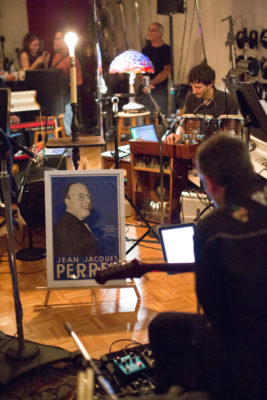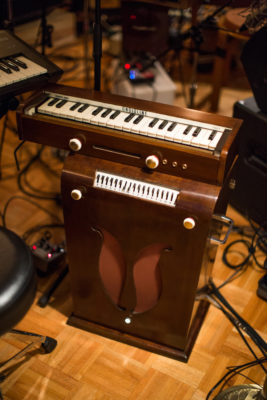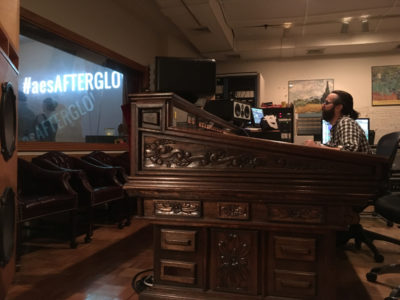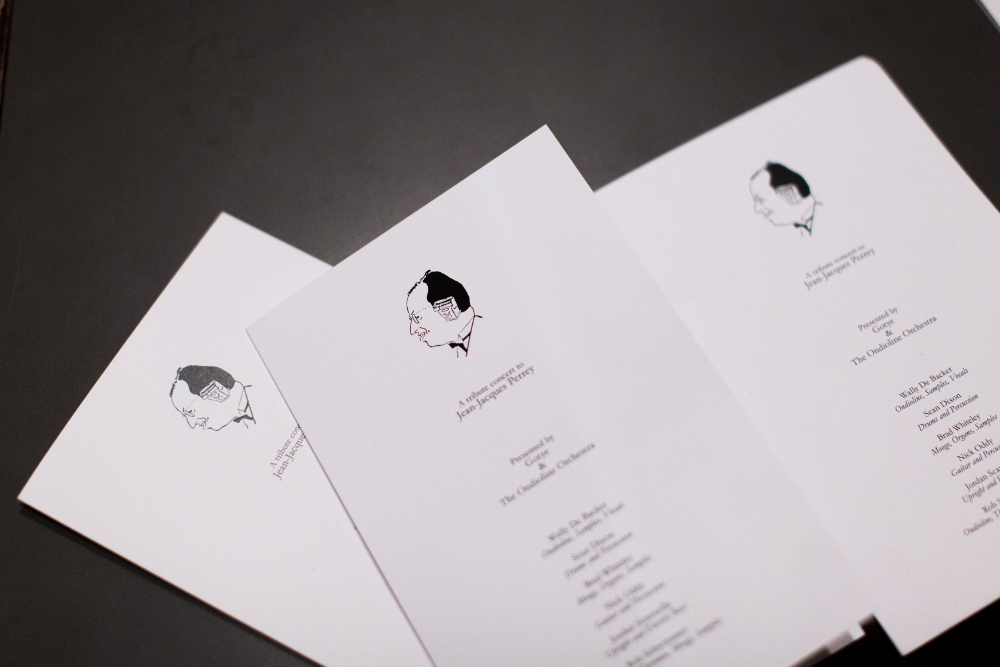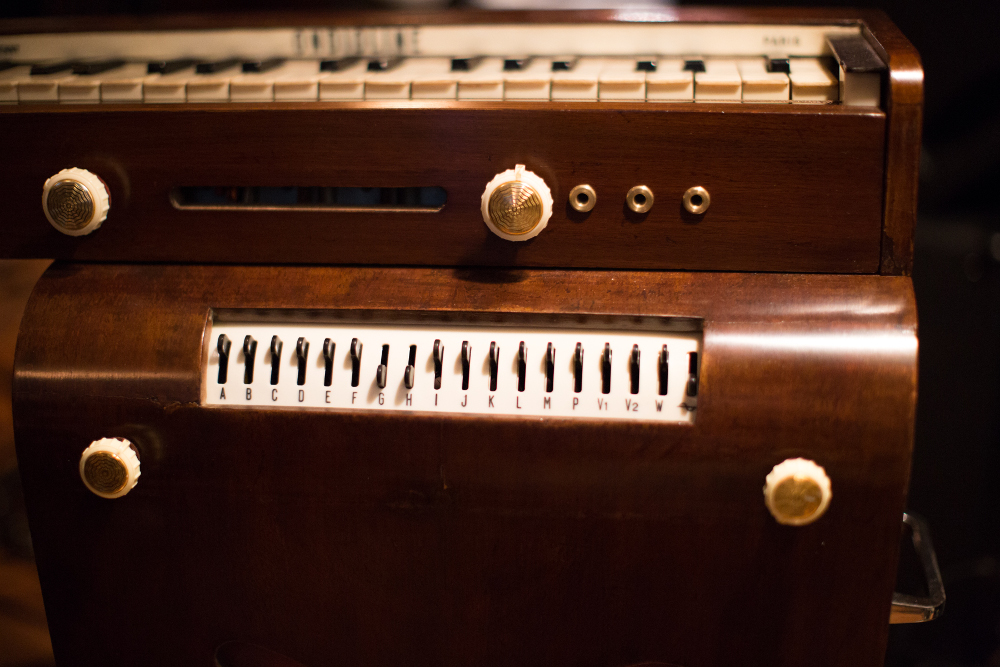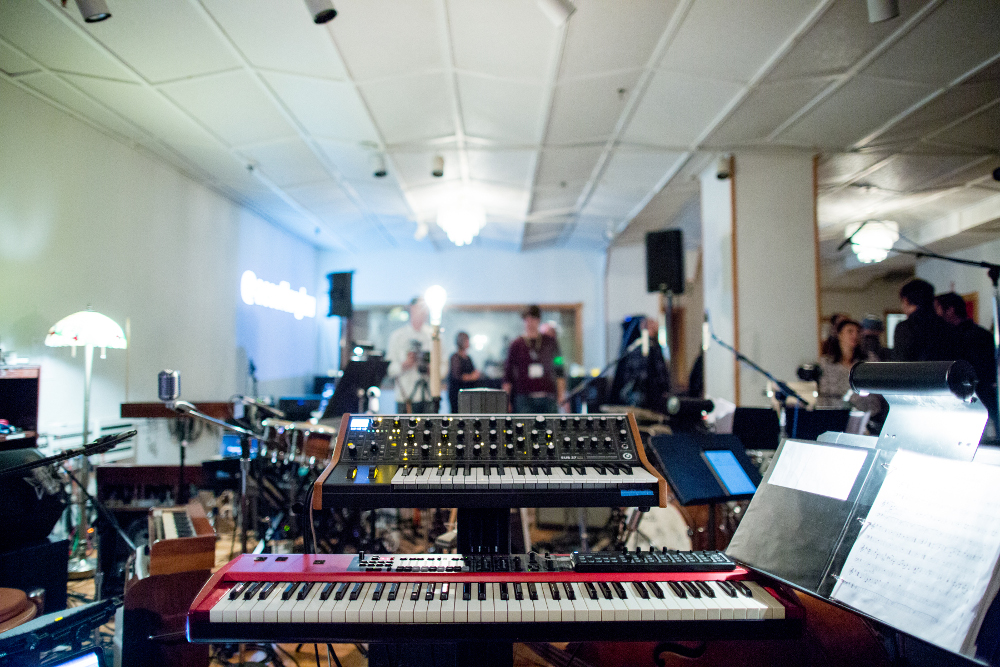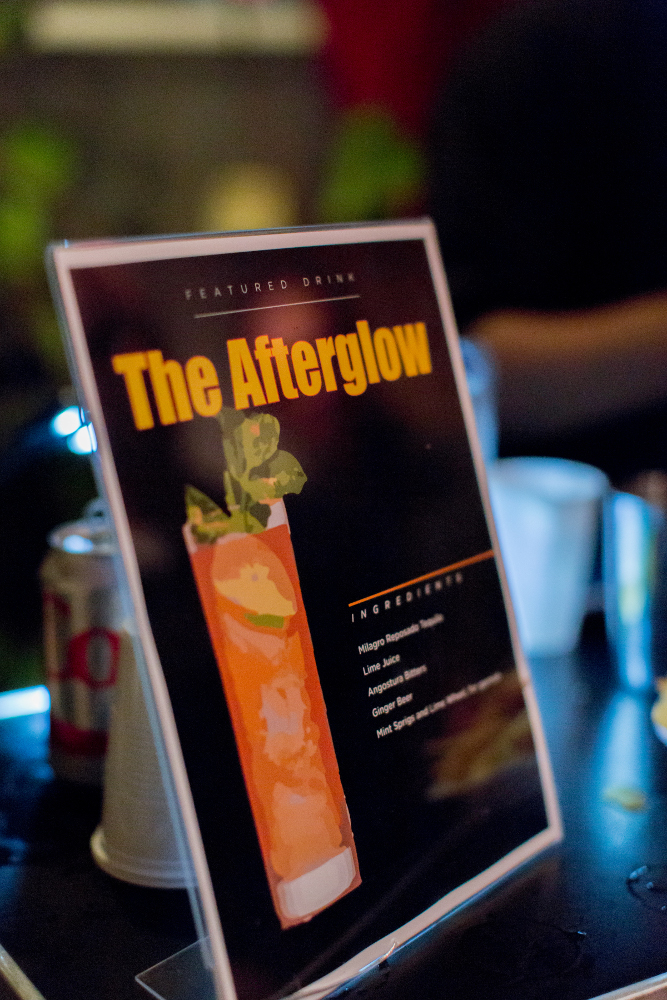Recording Gotye and the Ondioline Orchestra: A Unique Evening at Sear Sound
Tech excellence is in focus at AES conventions, most recently the 2017 confab that just wrapped in New York City. The showroom floor was packed with advances, while technical sessions and workshops shaped the science of sound.
But the Javits Center wasn’t the only place where engineering expertise was on display. Partygoers who hit the annual Afterglow party this year got a lot more than they bargained for when they came to NYC’s famed Sear Sound. Besides cocktails and canapes, they were treated to a jaw-dropping performance by the Ondioline Orchestra.
Founded and led by the inventive artist Gotye (“Somebody That I Used to Know”), OO is the ideal vehicle for this internationally acclaimed recording artist’s sage instincts. The ensemble is centered around the ondioline, an early synthesizer whose tube-based oscillator circuit design debuted in 1941 (see an excellent in-depth history here). Their performances and recordings as the Ondioline Orchestra form a joyous love letter to fun, expressiveness, musicality, and the instrument’s undisputed master Jean-Jacques Perry.
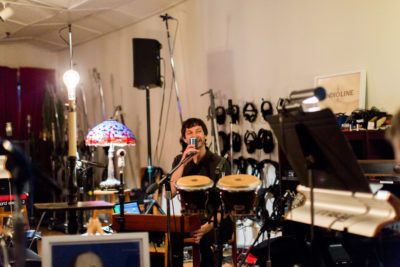
Gotye was right at home with his Ondioline Orchestra at Sear Sound. (All photos unless otherwise noted: Monika Rivard)
Set up in Sear Sound’s Studio C — one of the most respected live rooms in New York City — the Ondioline Orchestra blew the collective minds of the audience gathered in the round around the performers. In addition to dual ondiolines played by Gotye (AKA Wally De Backer) and Rob Schwimmer, the six-piece group included Sean Dixon (drums and percussion), Brad Whitely (Moog, organs, samples), Nick Oddy (guitar and percussion), and Jordan Scannella (upright and electric bass).
The resulting 15-song setlist was umami for the ears. It featured tune after tune of virtuoso musicianship, grooves, with oodles of surprising sounds for an audio engineering crowd who left with ears widely expanded. The band’s love for the music made it all look easy, but recording the sets in the studio — with a live audience in both the tracking space and control room — required an elite skill set of its own.
Artist Meets Audio
De Backer had consciously set his sights on connecting with the AES in 2017. In addition to the Afterglow performance, he was also a panelist on the Saturday Archiving & Restoration Track session, “Is There Life on MARS? Preservation Techniques for the 21st Century.”
“I’m lucky to be able to explore more deluxe equipment after the success of my last record, and it’s a joy to really tune into the quality of these things,” De Backer said of his evolving connection to audio. “Things like Prism Sound’s converters, a Rupert Neve 5088 console and an Ampex ATR 104 have allowed mixes of some of my new music to have a richness and cohesion I’d been striving for over many years. Beyond this, I just want to keep experimenting with different ways of making records.
“Studio C at Sear Sound has a wonderful feeling in the room — I love the plants and natural light during the day. Walter Sear was an inspiring guy — he had a musician’s sensitivity for audio technology and put together spaces that are conducive to performing music.”
Accompanying Gotye into Sear Sound was engineer Marc Urselli, whose long experience in both and studio live sound, plus helming two previous Ondioline Orchestra performances, made him the natural choice for the 2017 Afterglow.
Forming a dream team with Sear Sound chief engineer Chris Allen and assistant engineer Owen Mulholland, Urselli had a feast of microphones to choose from during setup — and the delicious opportunity to mix on the Sear-Avalon custom console later on.
“Sear Sound is one of my favorite studios in NY — along with East Side Sound where I’m based, of course!” Urselli says. “Every time I do a session at Sear I have a good time and the crew there is very helpful, nice and respectful. We have a great rapport.
“Chris Allen and Owen Mulholland were there to assist with setting up and choosing microphones. Obviously we only had access to studio mics rather than live sound mics, other than the ones we carry for Wally’s vocal and his ondioline.”
Since the show was taking place in a recording studio, the engineers decided that they would record the show — but still treat it as a live concert, and not as a recording session. “In other words,” Urselli says, “we didn’t use gobos or baffles or booths, we didn’t set up instruments with leakage in mind but rather ‘in the round,’ which is like every Ondioline Orchestra show takes place. Furthermore, we had a small PA in the room to which I was feeding a version of my mix in the control room — the PA consisted of four QSC K8 speakers on sticks, a setup that doubled as monitoring for the musicians.”
For the mix, Urselli engaged the onboard attributes of the console — a 60-channel masterpiece of Avalon mic pre’s and EQ’s handbuilt by Walter Sear himself — along with Pro Tools plugins for compression and gating. “I chose plugins over the amazing hardware at Sear because I didn’t want to print any of it,” explains Urselli. “I just wanted to monitor with some compression on some instruments and some gates on others, so basically what was going to Pro Tools was exactly what was coming into the console. My mix choices were only for the people in the room and for the rough mix I was printing.”
Pay careful attention to Urselli’s signal path, which required a subtle mastery of routing to simultaneously perfect both the live and recorded aspects of the performance. “I got my mix ready in the control room and then I did a post-fader sub mix from the console to send to the small PA,” he says. “It had to be post-fader because I needed to be able to ride the whole show and feature the soloists as I would at a real concert in a concert venue. The moves I made in the control room had to be replicated in the live room.
“I couldn’t, however, send the exact same mix to the live room because obviously in the control room there were a lot of drums in the mix. Meanwhile in the live room mix there was only a bit of kick and snare in the sub mix to the PA.”

On top of the Ondioline
Of prime importance was miking the ondioline properly, not just to capture it cleanly for posterity, but to insure a positive first impression for the invite-only audience — 99% of whom would be experiencing this rare and decidedly off-beat synth for the first time.
“Wally owns two classic Shure reissues — I believe it is the 5575LE — and we used those for his vocals and for his ondioline dry cabinet,” Urselli reports. “For the ondioline wet and the other two cabs of the ondioline played by Rob we used Neumann U 87’s, although live we would normally ‘settle’ for a Sennheiser 409/509/609 or a good old Shure SM57.
“I’m a fan of short signal paths so everything was going straight into the console and using its onboard preamps. We also ‘upgraded’ some of the other mics since we had Sear Sound’s amazing mic collection at our disposal. And since it was AES and every mic manufacturer wanted to be involved we had some Sony prototype microphones as drum overheads, and also some Soyuz microphones as room mics to record the audience to Pro Tools. Obviously I was not sending the audience mics into the PA, but in the control room I was actually fading them in and out between songs so that the control room audience could hear applause between songs.”
Collaborating with Gotye and his producer Franc Tetaz in a mixed hybrid studio-live situation not only gave Urselli the chance to explore new studio techniques, but also to creatively recreate classic ones. “On one song the vocal has a spacey effect on it, as it does in the original song by Jean-Jacques,” Urselli notes. “Even in the studio where we could have done it with plugins or other hardware we used a ring modulator stomp box and a BOSS delay pedal. That’s how I do it live also, to achieve the exact effect in the most historically accurate way.”
Urselli’s reward for all the hours of setup was occupying the sweet spot in Studio C throughout the sets. “I’ve used that console many times at Sear Sound — it’s a great-sounding console,” he confirms. “The preamps have tons of headroom and are very clean. I like having adjustable high pass filters, the Avalon EQ’s sound good too, and most of all I like that for every high pass and low pass and EQ you can decide whether you want to just monitor it, or have it go to tape. Walter was a genius and I regret never meeting him, but (Sear Sound studio manager) Roberta Findlay is a trip too!”
Recording Outside the Box
Now in its 9th year, the AES Afterglow has established itself as the anchor after-hours event for audio’s central convention. With a who’s who of the audio engineering world and a full roster of plugged-in sponsors listening, there was pressure on the whole Sear Sound crew to perform. For Urselli, however, the opportunity at Afterglow wasn’t to show off — instead, the seasoned sound expert used the unusual gig to grow his horizons.
“I’m always looking for challenges in my career,” he states. “It’s good to challenge yourself and get out of your comfort zone, it’s how you get better at what you do. I have a very diversified career so I’ve recorded all sorts of unusual instruments, including world music instruments from every corner of the world — Africa, Asia, Europe etc…: duck calls, pants zippers, water bowls on crazy experimental John Zorn records, sea shell with Steve Turre. That extends to handmade inventions that make sound, like the Wollesonic collection of instruments by Kenny Wollesen, which consisted of about 500+ different sound-making devices that we cataloged, photographed, sampled and recorded. I enjoy the challenge and I’m always up for it.”
For emerging engineers looking to get to his rarified level, Urselli offers a road map. “Trial and error summed with experience are the only way that works. Ask the musician, don’t be afraid to look like you don’t know — as the person playing it they will most likely know the best way to mic the instrument.
“I just use my ears and my experience with microphones and preamps,” he continues, “and if I’m really unsure about something I set up multiple mics and record from multiple directions. However usually when you hear the instrument in the room and then you go to the control room and listen back, you’ll know right away if you’re capturing it properly or not.”
At the same time that Urselli, Allen and Mulholland were discreetly putting on a clinic for their audio colleagues, they learned some new tricks themselves.
“This experience was special — it was the first time I was mixing for an audience in a recording studio while simultaneously manning a recording session,” Urselli says. “So I was riding faders constantly and also keeping preamp levels in check, labeling Pro Tools tracks, files and markers, using plugins for monitoring, naming folders and checking disk allocation, remaining space etc… You don’t want your live concert recording to stop because your hard drive doesn’t have enough room for hour-long, uninterrupted 24bit/88.2kHz sessions.
“I’ve always done live FOH sound as well as studio recording and mixing, but this particular event has really brought all of those things together in one world, which was exhilarating! Best of both worlds!”
With the presentation of Gotye’s Ondioline Orchestra, Afterglow expanded the scope of the annual AES evening event it launched in 2009 with Vintage King. Since then, it’s been hosted at New York’s Platinum Sound Recording Studios, Electric Lady, Chung King Studio, and DiMenna Center for Classical Music. On the West Coast, venues have included San Francisco’s Studio Trilogy, and the rooftop of Los Angeles’ The Standard.
Event producer Shevy Shovlin of Headroom for Days, who worked in tandem with co-producer Karen Dunn to make Afterglow NYC2017 a reality, agreed with Urselli that the unique show was a natural fit for all things AES. “Ondioline Orchestra is amazing in the dynamic range of their performances,” observed Shovlin. “Combine that with the musicianship of the group, Gotye’s charisma and star power, plus an incredible studio, and you’ve got something special: It’s a perfect storm.”
For De Backer, the feeling of the Afterglow sessions can be summed succinctly. “In short, great joy!” he said. “Playing Jean-Jacques Perrey’s music, and with the brilliant musicians in the Ondioline Orchestra, is always an inspiring experience.”
— David Weiss
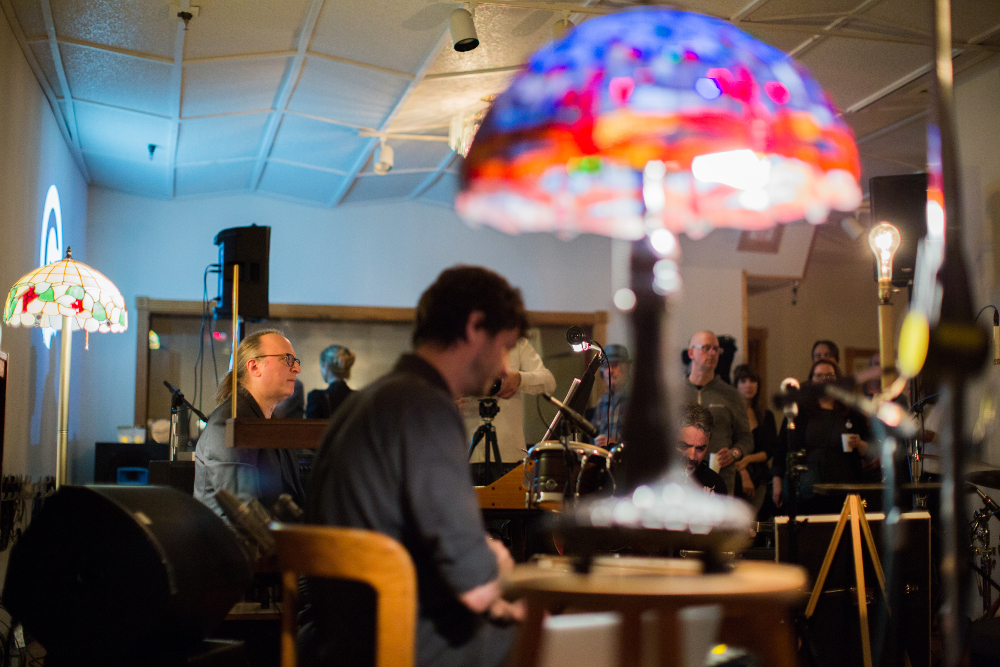
Gotye’s Ondioline Orchestra played before a live audience in Sear Sound’s Studio C. The control room window is visible in the back.
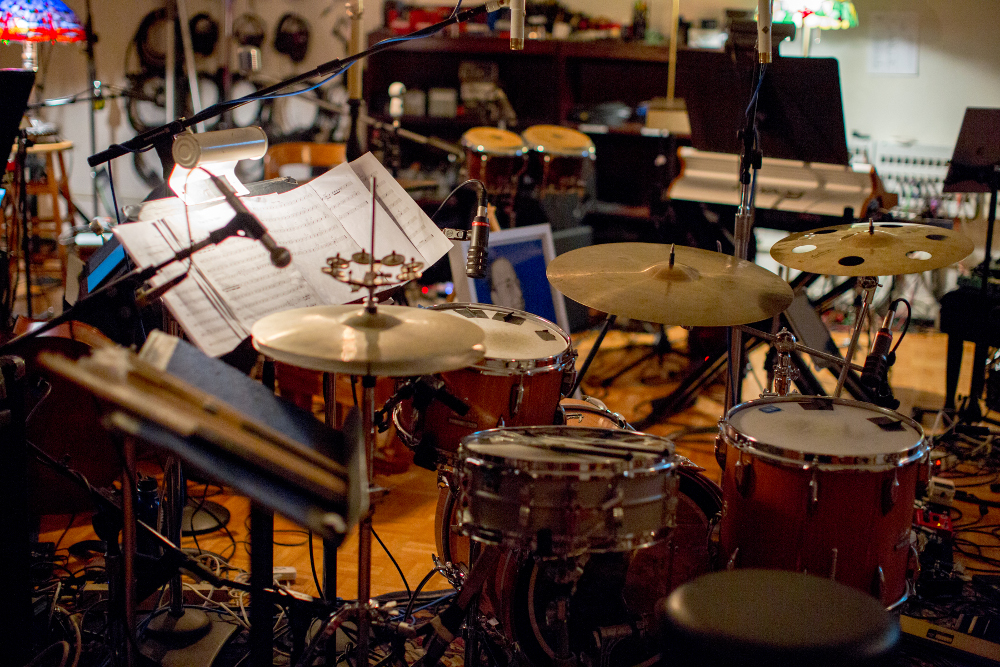
Marc Urselli: “We went with the Sear Sound house mics for the drums, so I don’t recall exactly what we used this particular evening. Usually for this project live I’ll use Electro-Voice RE20 on kick, Shure SM57 on snare top and bottom, Shure SM81 on hats, Sehnnheiser 604 or e904 on toms and AKG 414’s on overheads. I recall in the studio we used a Telefunken M82 on kick, a Beyer M160 on hi hat, and MD421’s on toms. For overheads we used Sony mics.”
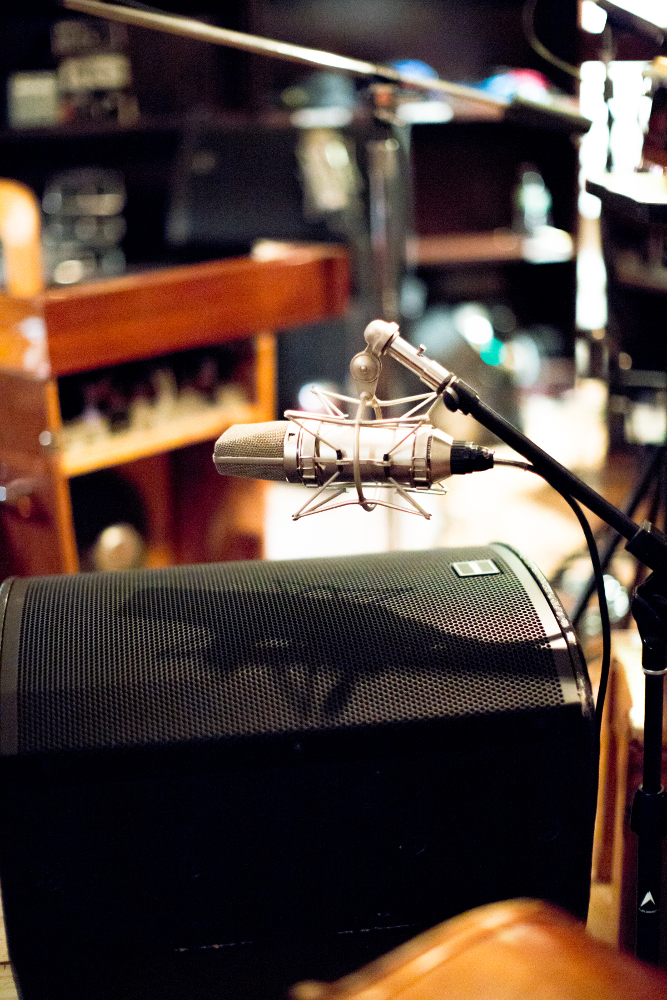
Marc Urselli: “This is a Neumann U 87 micing up the cabinet of the keyboard player on the left of Wally (audience perspective) or on Wally’s right. For this show it was a player by the name of Brad Whitley, who plays Moogs, organs and samples. His keyboards are submixed and go to this cabinet, which in the studio was pointed upward so everyone could hear it more or less equally.”
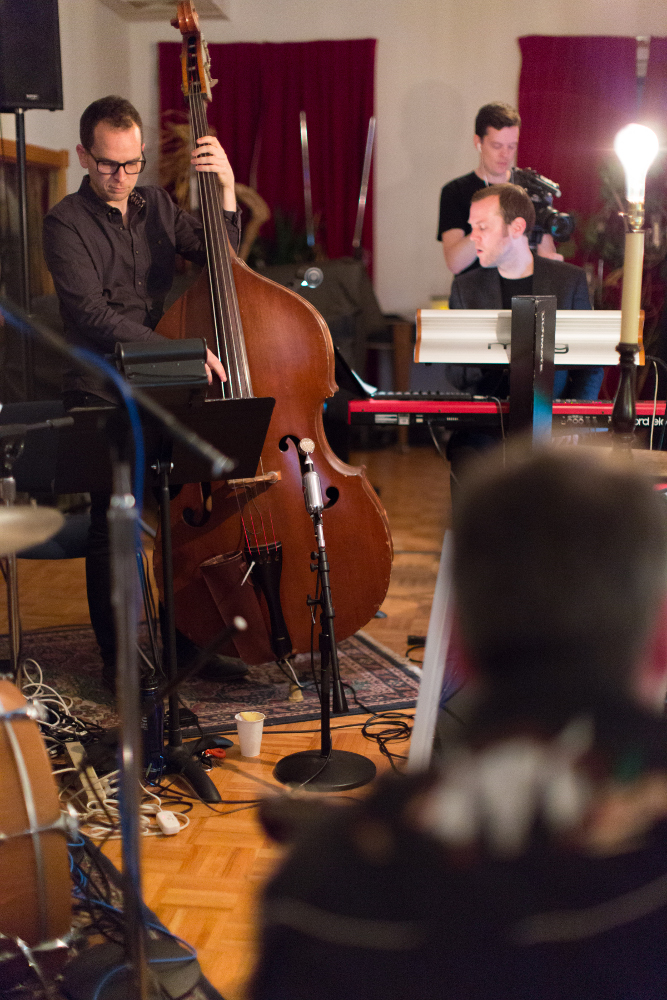
Marc Urselli: “A Soyuz microphone for the upright bass. Live we usually only mic the bass cab, but since we were in the studio we also miced the f-hole of the upright bass.”
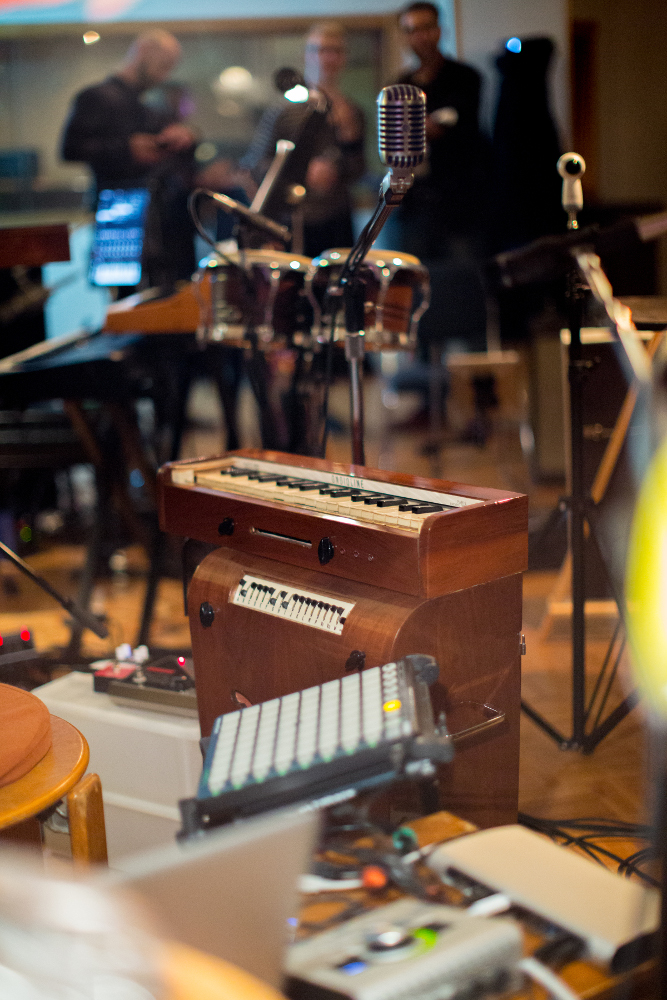
Marc Urselli: “This is Wally’s vocal microphone above the ondioline. I believe it’s a Shure Super 55, while on the cab of the ondioline (not pictured here) he uses a Shure 5575LE.”
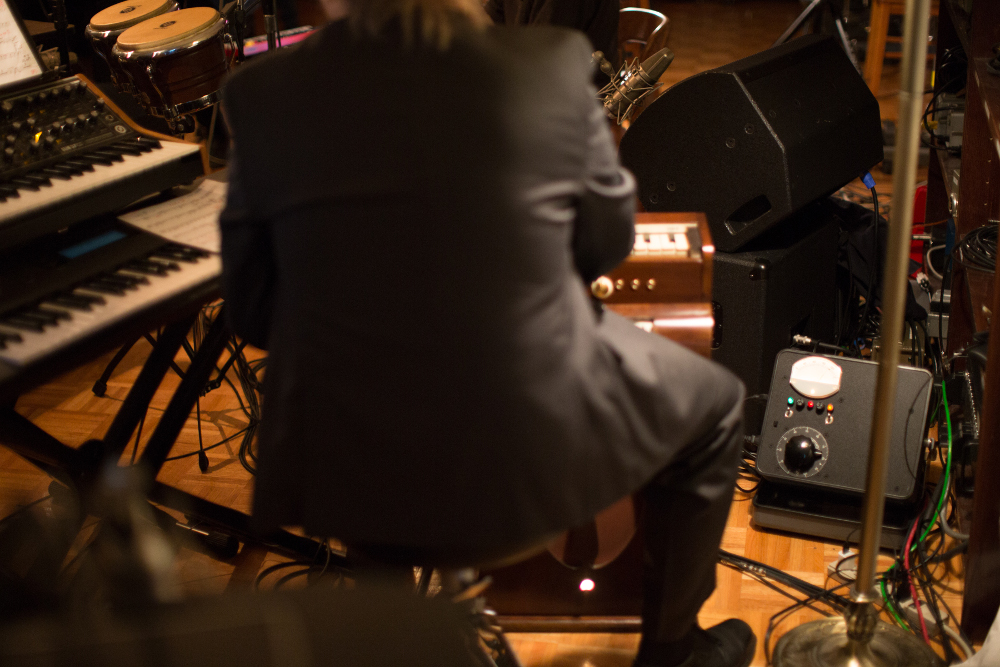
De Backer: “That device on the floor is a custom variac/voltage regulator, made by David Riddle in CA, entirely out of vintage recycled components. It provides clean, stable power for the ondiolines in our show.”
Please note: When you buy products through links on this page, we may earn an affiliate commission.







